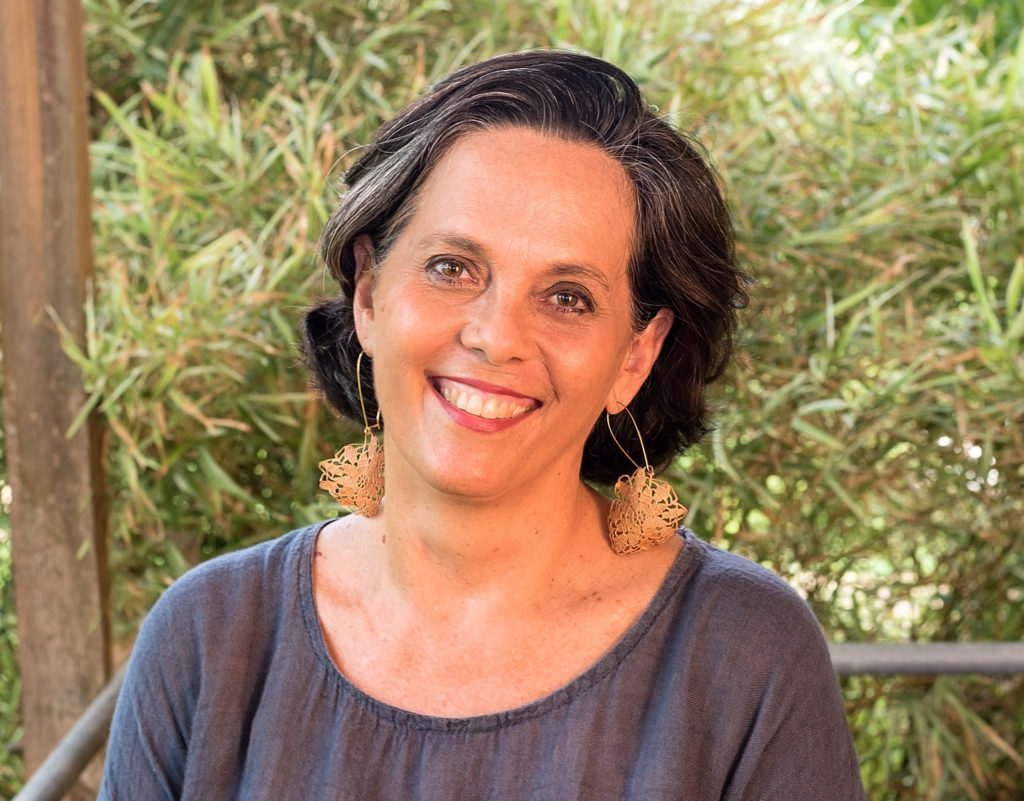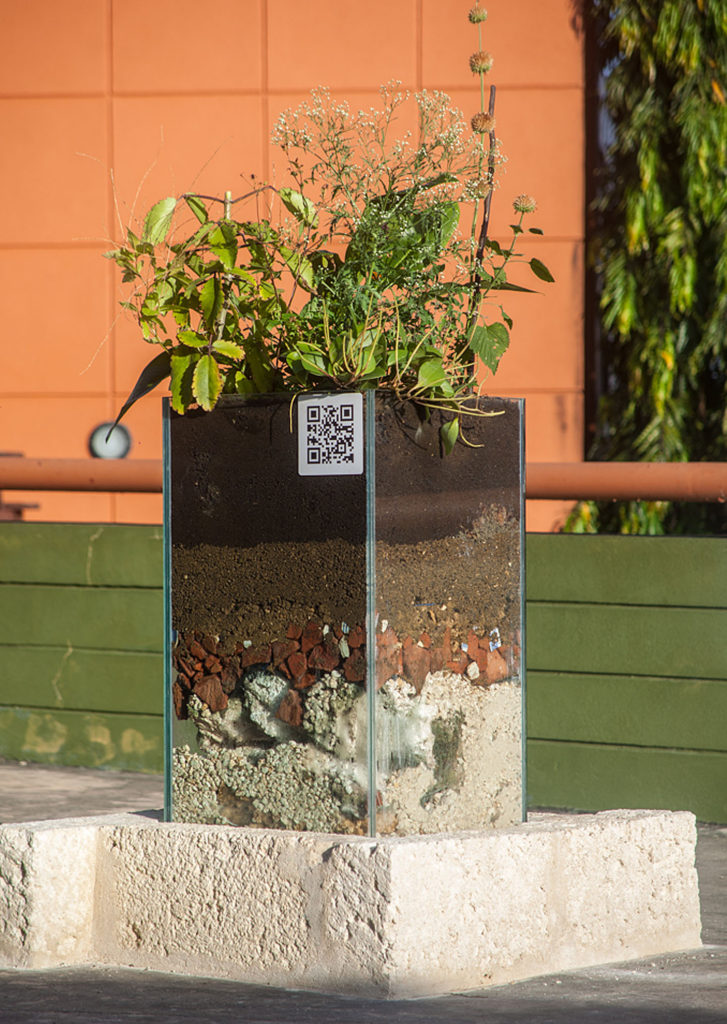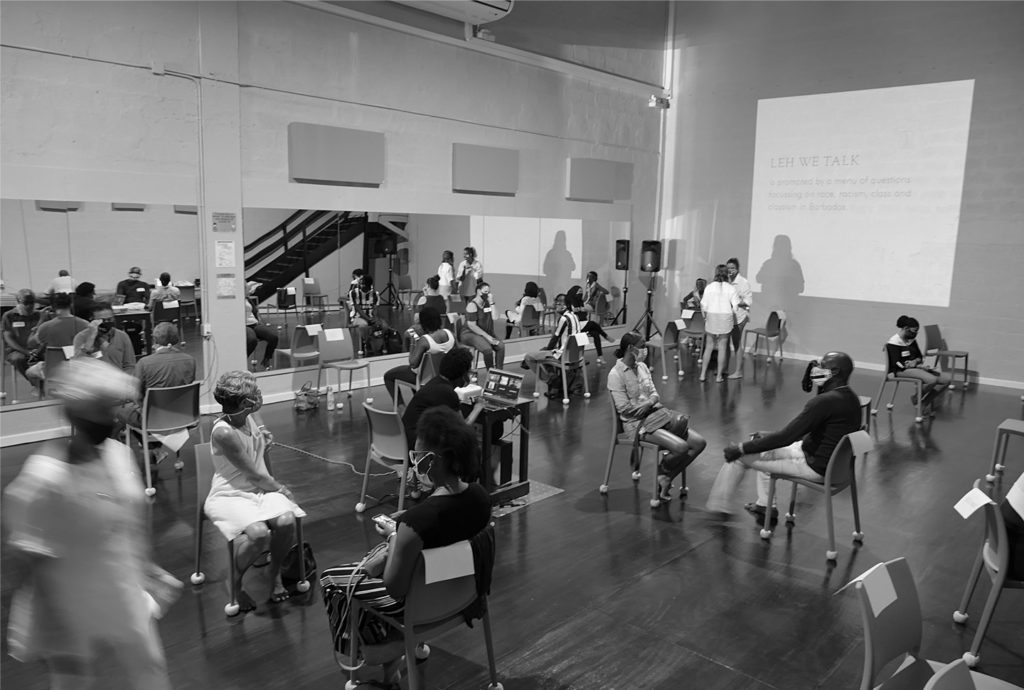A conversation between Marsha Pearce and Annalee Davis

Marsha Pearce: Hello Annalee, how are you? How are you navigating these times?
Annalee Davis: Hey Marsha, thanks for connecting. Well, to be honest, COVID-19 caught me off guard. For the first few months, the word I used most often to express how I was feeling was unmoored. I felt like I was without a rudder and found it quite difficult to make new work. I resorted to writing, reading and walking. Barbadians were required to stay within our curtilage for some time and I was blessed to have fields to walk in since my home and studio are located on a working dairy farm. That profound sense of claustrophobia many struggled with was not something I had to grapple with, fortunately. I also learned that I am much more of an introvert than I realised.
Immediately prior to COVID, I was preparing to ship a suite of drawings to Vienna for a group exhibition at Kunsthalle Wien and Wiener Festwochen curated by Miguel López. The show is titled And if I devoted my life to one of its feathers? but has been postponed until May 2021. I was also working towards The Words Create Images, the 5th Edition of the International Biennale of Casablanca curated by Christine Eyene. Originally scheduled for September 2020, this too has been postponed until May 2021.
And, Caribbean Linked, the residency programme in Aruba that Fresh Milk co-manages with Ateliers ‘89 and ARC Magazine, initially planned for August 2020 has also been delayed until 2021. We hit the pause button on Tilting Axis. 2020 has become an efficient eraser and I’m trying to recalibrate since all of these anchors defining my year were pulled up and cast away. We all live in this new world.
In the wake left by the pandemic, other opportunities have developed for which I am grateful. The cancellation of an international seminar to be held in Barbados quickly transformed into a series of Live Streamed conversations for panelists. I had the privilege of being a part of WIRRED’s programme to speak about my work (Bush) Tea Services, in relation to regenerative agriculture, climate mitigation and resilience. It lessened the feeling of being isolated early on in the pandemic.
More recently, I have returned to my hybrid practice in this ‘new normal’ where many are learning to be adaptable, nimble and work in trans-disciplinary ways. While the addiction to productivity is a tough one to overcome, my new mantras are ‘slow cultural work’ and ‘de-growth’. Mother Earth and most human bodies are exhausted. Rather than constantly aiming for more or bigger, I am trying to slow down. I am also grateful for good leadership – Barbados is blessed to have ‘Aunty Mia’ at the helm and many of us feel confident with her as Prime Minister.
Your practice involves your engagement with a former plantation in Barbados, which is the site where you live and work. You have been looking at the growth of wild plants there as a process of decolonising former sugar cane fields. Tell me about your Wild Plant series, which will soon be displayed as part of your first solo exhibition in the UK.
This 2016 series of drawings functions as graphic interventions into 1970s ledger pages – the substrate designed to log economic activity on the plantation. Data entered into ledger pages comprised registering wages, field activity and rent rolls as well as measuring rainfall and the signing out of agricultural implements to plantation labourers. Some years ago, I found hundreds of ledger pages on the floor of an abandoned bookkeeper’s office on the sugar plantation where I grew up – frogs and lizards were running over them. My family had not lived there for more than 25 years. I recognised my mother’s handwriting in some of the columns along with several names of men and women who worked on the plantation in the 70s and 80s.
I came across wild plants while walking in former sugar cane fields and have come to think of them as active agents in the process of decolonising the fields, performing a quiet revolution in the soil by asserting themselves against an imperial, monocrop landscape. Taught to see them as unwanted weeds in the furrows of sugar cane fields and often removed by pesticides, I unlearned that way of thinking and began to understand their value in offering biodiversity to the land along with their historic use for bush teas, baths and medicine.
Collecting, pressing and drawing these wild plants, complicates the single economic story written in these plantation ledger pages, acknowledging their medicinal properties and earlier use as an apothecary by those who were enslaved and laboured on the plantation. I thought that my drawing these wild plants onto these found ledger pages might offer alternate ways of reading the site while countering the daily logging of economic activity.
This is one of four works I’ll be showing in the gallery at Haarlem Artspace while simultaneously participating in their virtual project Haarlem Periodical along with UK artists Feral Practice, Deirdre O’Mahony and Pauline Woolley.

The exhibition at Haarlem Artspace will also feature a newly commissioned piece titled (Bush) Tea Plot – A Decolonial Patch for Mill Workers. What can you tell me about this work and its specific connection to history and place in England? How are you thinking about connections between the Caribbean and UK?
Haarlem Artspace is located in a building that was initially a cotton mill, built in the late 18th-century in Wirksworth, in the north of England – the birthplace of the Industrial Revolution. When I was invited to respond to this site, I was inspired by its former life and understood a historical connection in that Barbados, as a British slave colony, would have exported cotton to the UK. The cotton mill employed children from as young as seven, along with an older labour force, who toiled in unsafe and harsh work conditions, sometimes contracting illnesses related to processing the cotton. Cotton fluff was in the air and workers inhaled it.
My new sculptural work, (Bush) Tea Plot – A Decolonial Patch for Mill Workers, expands on my 2019 permanent installation at the EBCCI, UWI, Cave Hill, (Bush) Tea Plot – A Decolonial Patch. The installations link to shared industrial and colonial histories on both sides of the Atlantic; exploring environmental resilience, regeneration, and healing through the use of wild plants before medicine was widely available.
The structure of the work includes a one-metre tall glass vitrine fitted inside a limestone plinth harvested from a nearby limestone quarry in Wirksworth. The transparent vitrine reveals the soil profile. Embedded in the soil will be a wooden bobbin once used in the cotton mill and a layer of 18th and 19th century sherds I found in the fields here at my home in Walkers Dairy, Barbados. The collection includes pearlware, creamware, stoneware and transfer-printed whiteware. The repatriation of these artifacts acknowledges their likely origin back to the Staffordshire potteries, located near Wirksworth. Initially shipped out to Barbados as ballasts on ships and used by both the settler colonial class and the enslaved population, they’re soon making their way back by DHL courier shipping, two to three hundred years later.
Growing out of the top of the vitrine will be a selection of wild botanicals selected for their healing properties such as Coltsfoot, Yarrow, Red clover, Horsetail, Vervain, Wild plantain, St. John’s Wort and others. Cognisant of a workforce including women and young children adversely affected by substandard cotton mill labour conditions, this living apothecary acknowledges those who toiled and were afflicted with poor health. Traditionally held to have medicinal qualities, this collection of plants is selected in recognition of cotton mill worker ailments including spinner’s phthisis or pulmonary tuberculosis and upper respiratory problems among others.

This pandemic puts all age groups at risk, but older people have been identified as facing significant risk. A few months ago, the derogatory term “Boomer remover” surfaced in reference to coronavirus – suggesting the virus aims at the baby boomers or those aged between 55 and 75. This feeds negative perceptions of old age. I know you have also been creating work that explores and confronts ageing. Please tell me about this work.
While on a Reed Fellowship at the Vermont Studio Center in the Fall of 2019, I produced a group of six drawings collectively titled Second Spring, to elucidate the shifting interior terrains in the post-reproductive female body. These large-scale drawings explore women’s embarkation into the uncharted territory following the generative stage of life. I wanted to ask questions about how our experiences with growing invisibility, shifts in desire, hormonal readjustment levels and increasingly androgynous states of being, impact our expectations of womanhood as we grow older. I was also curious to understand what changes manifest with this proximity to ageing and changing perceptions of beauty from one woman to the next during this evolution.
I think that patriarchal narratives characterise many women’s experience to the confines of marriage, motherhood, sex, and eroticism. These reductive characteristics extend to the framing of this powerful transition in misogynistic terms arousing anxiety, shame, and judgment. A lack of education around the metamorphosis that women’s bodies undergo implies that as older women, we are past a ‘sell-by date’, that we are no longer useful or valued to society – becoming ineffectual when our capacity to reproduce wanes.
The Second Spring series contests these entrenched fictions through an authentic and personal chronicling inspired by encounters with wildness, thresholds, intuition and alignment to spirit. The drawings augment a remapping of this unfathomable biological mystery, countering the intransigence of prescribed femininity, revealing a woman’s body shifting on and off plantation ledger pages. The woman wears Motherwort and Queen Anne’s Lace (both the plant and crochet). Post-reproductive breasts sprout Queen Anne’s Lace as part of this profound metamorphosis. In one image, she holds a powerful, wild stance as a multi-breasted woman.

You have been vocal about the impact of the pandemic on the creative sector and, you have expressed a desire to consider issues of race and class in our Caribbean contexts, given the recent global protests against racial injustice. Tell me about your new initiatives: your conversational art project titled LEH WE TALK and your partnership to launch CATAPULT Caribbean Arts Grant.
This has undoubtedly been a profound moment and I have never before engaged in so many conversations about race and class – with friends, family, acquaintances and strangers alike. I was proud to be part of the Black Lives Matter march in Barbados on June 13th and see that the current debate, building on decades of work, including a petition by a young Barbadian historian, Alex Downie, contributed to the removal of the Nelson statue in Bridgetown and suggests our maturity as a nation.
While these more recent conversations in Barbados have been provoked by the Black Lives Matter movement in the USA and George Floyd’s murder, I thought that we needed to address the nuances of our particular situation and our history. I don’t imagine we’ll ever have a moment like this again and wanted to harness this heightened interest in and openness to discuss race and class. I felt moved to write a post on my Facebook page called On race and whiteness from the context of Barbados #1.
I then developed Leh We Talk | Real Conversations on Race and Class in Barbados (LWT) as one platform to discuss race and class in our own unique context on this island which suffers from social apartheid. (I noticed the tribal electoral boundaries on a map outlining the 2020 Trinidad and Tobago general elections results – we all have so much work to do). LWT expands on my 2015 discursive project, White Creole Conversations, a suite of 24 exchanges between me and one other person about the experience of whiteness in the context of the Caribbean.
LWT is a form of research informing new work for the 5th Casablanca Biennale about issues of race and class. I had the pleasure of collaborating with Barbadian, Janelle Headley, the director of Operation Triple Threat (OTT), a Barbadian theatre company where this inaugural discursive art project kicked off on Saturday, July 18. A group of about 40 Bajans gathered according to COVID protocols at OTT. On arrival, participants were paired with partners of a different race and they engaged in intimate conversations, seated 3 feet apart, prompted by a menu of questions such as: When was the first time you were aware of your race/class or sensed you were different from others because of race/class? How have the forces of race, racism, class, and classism shaped your life?
This happened over two 45-minute sessions, followed by a group debate. I see LWT as an experiment in conversation as an art form itself, making us more curious and open and to ultimately foster human connection. It is designed for participants to speak about themselves while learning how to listen to others of a different race through questions focused on race, racism, class, and classism. Feedback suggests that participants valued the opportunity to hear themselves outside of their bubbles.

Shifting to my work as a cultural activist at Fresh Milk (FM), CATAPULT has been in the works since April when we were invited by Kingston Creative (KC) to respond to the severe impact that COVID-19 is having on creative people and the arts sector. A fund of US$320,000 from the Open Society Foundations was granted to the American Friends of Jamaica, facilitating KC and FM to design and deliver six programmes supporting artists, creatives and cultural practitioners across the Caribbean region.
The crisis is disproportionately impacting an already vulnerable creative sector in Small Island Developing States (SIDS), many of which lack the resources to provide adequate support to those working in the arts. Many artists work without safety nets and cannot access unemployment benefits which is why we are choosing to focus on cultural practitioners who do not have permanent employment at this time. Broad critical themes of Culture, Human Rights, Gender, LGBTQIA+ and Climate Justice from Caribbean perspectives are encouraged.
I am especially pleased that the grant is open to participants living and working in 34 countries across the Dutch, English, French, and Spanish speaking regions and see CATAPULT as an initiative which further coheres the region. A five-month comprehensive arts programme, it includes six projects of which Fresh Milk will manage two: the Stay Home Artist Residency and the Lockdown Virtual Salons. This will contribute to artists safely remaining in their studios and maintaining their art practice.
In between managing that programme with my colleague, Katherine Kennedy, I also plan to spend more time in my studio. Thank you for your generous questions, Marsha. I appreciate the Q&A project, its contribution to the visibility of the work our peers are doing and I am honoured to be a part of this. Gratitude and I wish you well.

Stay connected with Annalee Davis:
Instagram: @annalee.devere
Website: www.annaleedavis.com

Comments are closed, but trackbacks and pingbacks are open.